SLVSEW1B April 2019 – April 2019 TPS566235
PRODUCTION DATA.
- 1 Features
- 2 Applications
- 3 Description
- 4 Revision History
- 5 Pin Configuration and Functions
- 6 Specifications
- 7 Detailed Description
- 8 Application and Implementation
- 9 Power Supply Recommendations
- 10Layout
- 11Device and Documentation Support
- 12Mechanical, Packaging, and Orderable Information
6.6 Typical Characteristics
TJ=-40oC to 125oC, VIN=12V(unless otherwise noted)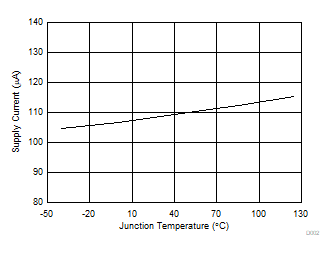
| VEN = 5 V |
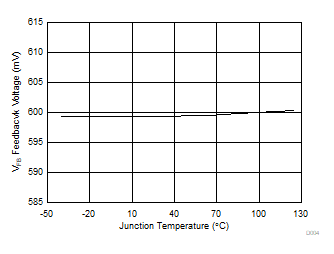
1.
Figure 3. Feedback Voltage vs Junction Temperature 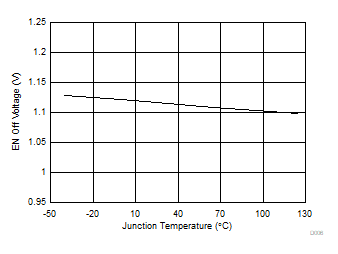
1.
Figure 5. Enable Off Voltage vs Junction Temperature .gif)
1.
Figure 7. Low-Side RDS(on) vs Junction Temperature 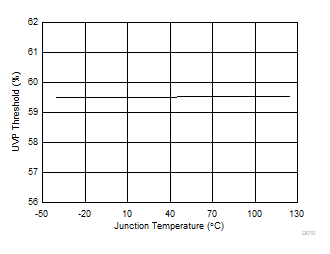
1.
Figure 9. UVP Threshold vs Junction Temperature 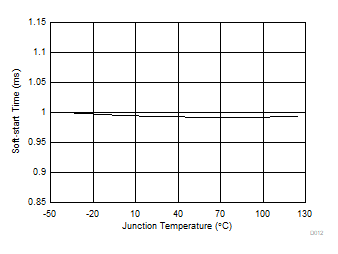
1.
Figure 11. Soft-Start Time vs Junction Temperature 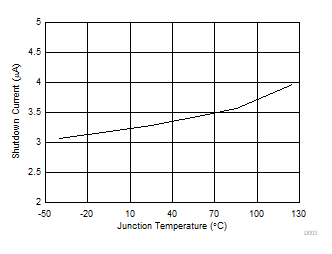
| VEN = 0 V |
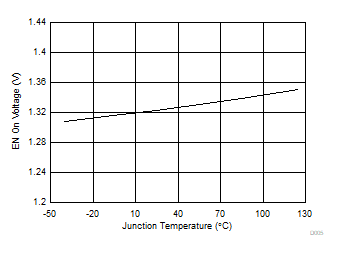
1.
Figure 4. Enable On Voltage vs Junction Temperature .gif)
1.
Figure 6. High-Side RDS(on) vs Junction Temperature 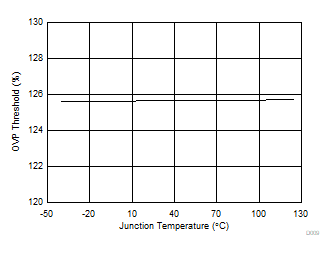
1.
Figure 8. OVP Threshold vs Junction Temperature 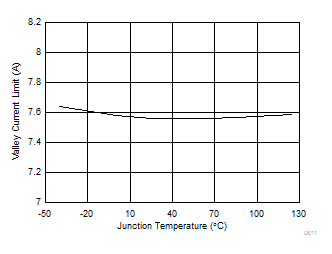
1.
Figure 10. Valley Current Limit vs Junction Temperature 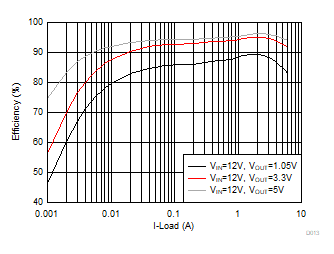
1.
Figure 12. Efficiency, Eco-mode 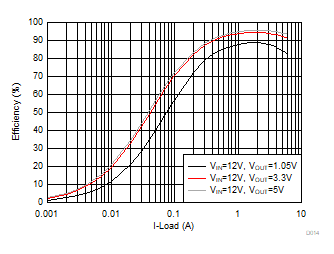
1.
Figure 14. Efficiency, FCCM 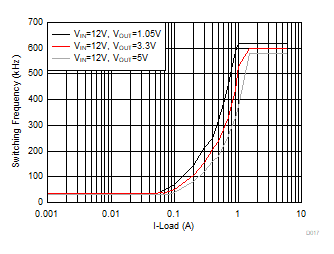
1.
Figure 16. Switching Frequency vs Output Load, OOA-mode 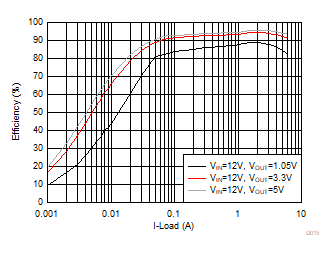
1.
Figure 13. Efficiency, OOA-mode 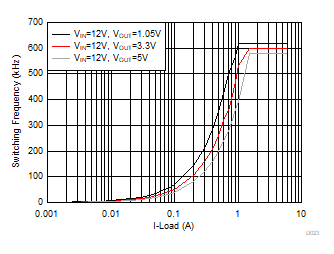
1.
Figure 15. Switching Frequency vs Output Load, Eco-mode 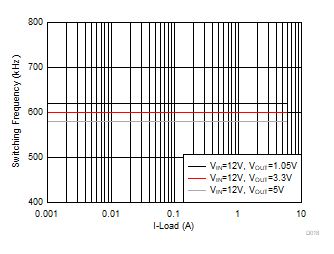
1.
Figure 17. Switching Frequency vs Output Load, FCCM